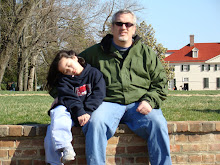Directed by Hiroshi Teshigara.
Screen play and novel written by Kobo Abe.
Released 1964.
With Eiji Okada, Kyoko Kishida, Hioko Ito, Koji Mitsui, Sen Yano and Ginzo Sekiguchi.
Shot in Black and White. Seen on DVD.
Having read the book, a comparison is inevitable. Seeing as the screenwriter and the novelist are one and the same, it's not surprising that the film follows the book pretty rigorously. It does dispense with much of the inner thoughts and musings of the lead character which is the novel's opportunity to wax philosophical, but otherwise it is a faithful reproduction of the novel.
The director of the film does add a visual style to the book. While the novel does a good job of painting a picture of the settings, this director adds some interesting visuals. Some objective close ups of the sand that has graphic elements as well as showing the different characters of how sand looks and flows. The setting is very claustrophobic as is appropriate, and the shack is shown in as an integral part of the characters. The characters are shot through windows, between posts etc. It demonstrates the importance of their home, which is a major theme of the film. (Discussed in detail in the review of the book). The woman stays where she is because it's her home, and her life and self are intertwined with this structure. To the man, I think it seems more menacing.
So perhaps its time for a short summary, which has been done once already in my review of the book. An amateur entomologist goes to the sea to look for a rare insect. He is invited and more importantly convinced to stay over the night by the villagers. He is then led to a hole in the dunes, and thinking that this residence, inhabited by the woman of the title, is temporarily, he happily and gratefully climbs into the hole in the dunes. He later finds he is trapped in this hole in the dunes by the village, who expect him to move, carry and shovel the endless sand that persecutes him and tortures him with it's constant presence.
The movie is more erotocized than the book. The book had some erotic moments, but the film accents these moments more forcefully. In one scene when they first make love, they are covered in sand (which is always the case) and it made me wonder just how comfortable that love making was. Wasn't there any chafing with all that sand?
Here is that scene.
In one pretty surrealistic scene, the villagers gather around the hole and he is told he can have a short leave for a short walk, if he will have sex with the woman in front of them. Why they want this is pretty unclear, what's the point of this public humiliation? It doesn't go with my theory that the endless sand and entrapment is a symbol of modern working mankind daily drudgery and its struggle with the monotonous work a day life they lead. Mankind is held to this slavery with the promises of home family and a few material trinkets. So why this public humiliation? Clearly the villagers are morally bankrupt as is demonstrated by their capturing of the innocent entomologist. Does it represent the authorities and their dominance over the everyday person and the willingness of the authorities to humiliate people to keep them in line. It's an idea.
In this scene, the man decides it's worth it just so he casn get out of the hole even for a brief moment and struggles with the woman and tries to even assault/rape her. His efforts are rebuffed and during this struggle, the villagers are watching with all sorts of weird masks and there is a drumming soundtrack, like the beating of a heart.
Ther is some more interesting imagery at the opening and closing sequences. Bits and scraps of official Japanese documents are shown on collage form and make for some very pretty imagery. The idea is that the man who has been entrapped eventually becomes an official missing person, hence the use of official documents for the collages.
Also the soundtrack was interesting. It was very experimental and modern. It reminded me of early King Crimson with acoustic instruments att heir most dissonant moments. I want to say that it was like John Cage, but I don't know his material enough, I can only say that it was definitely experimental. It was spooky and droning at times, and then sudden and noisy at other times.
Overall a very interesting film experience.
Here's another clip.
And here's a trailer.
Thursday, December 24, 2009
Subscribe to:
Post Comments (Atom)




No comments:
Post a Comment